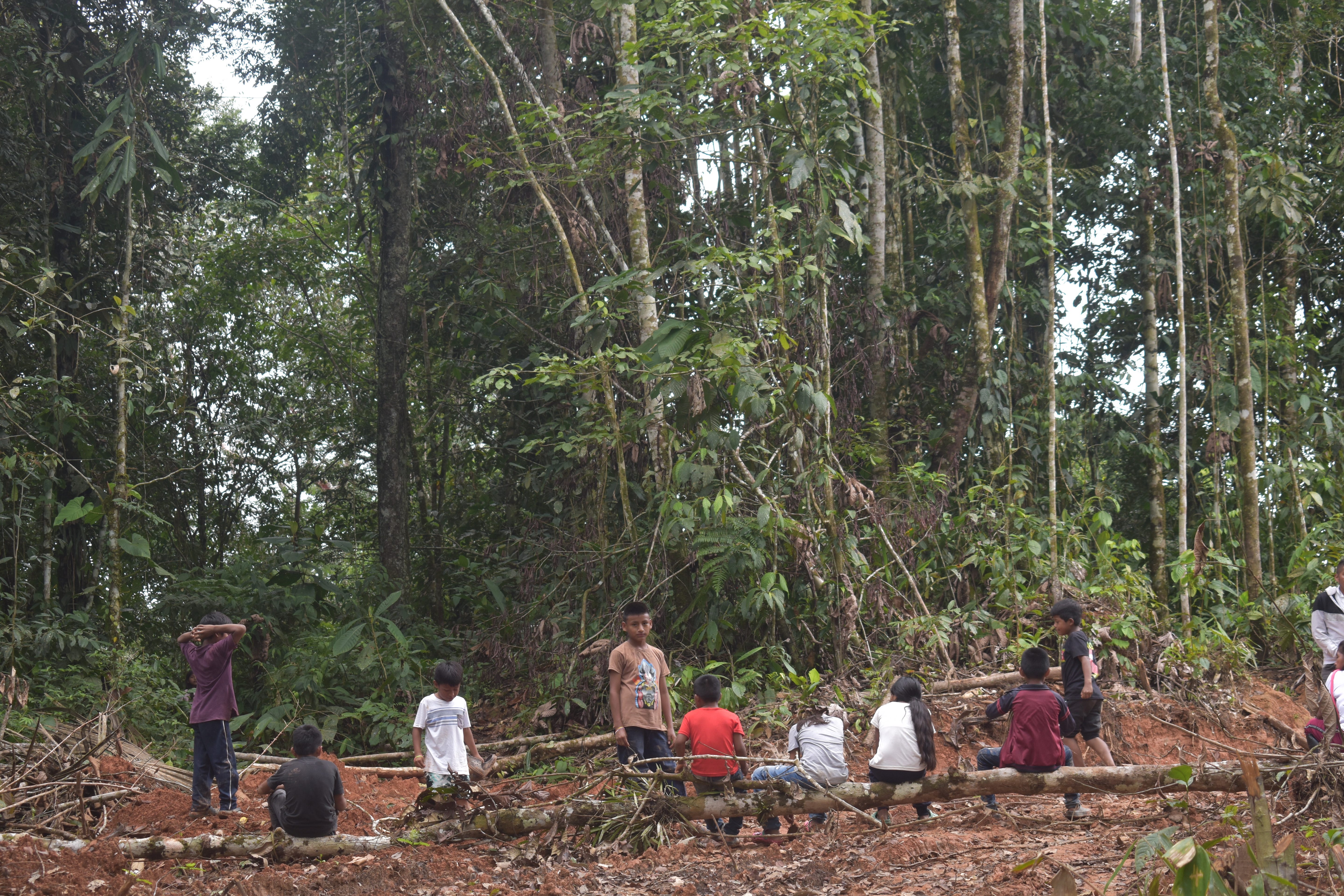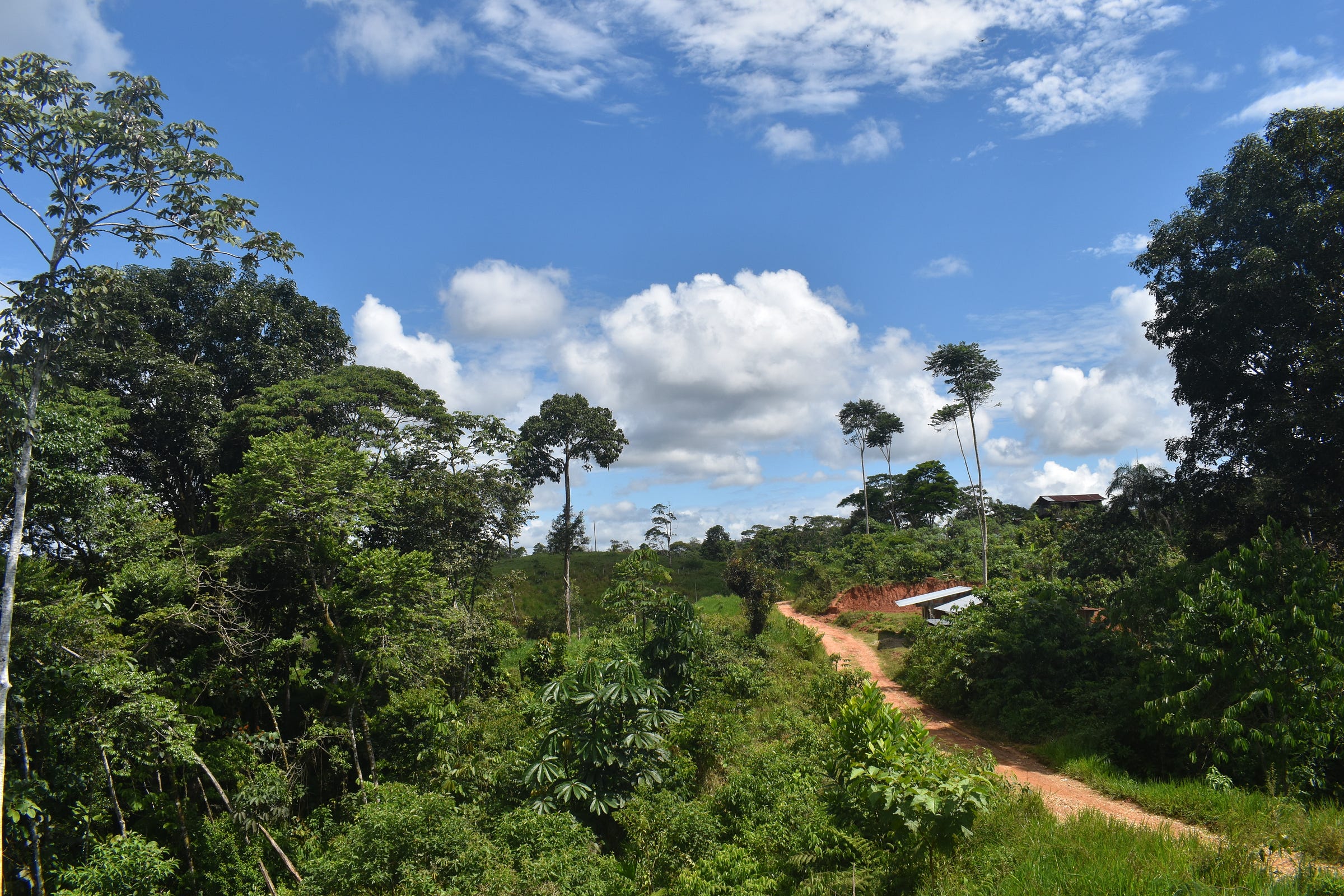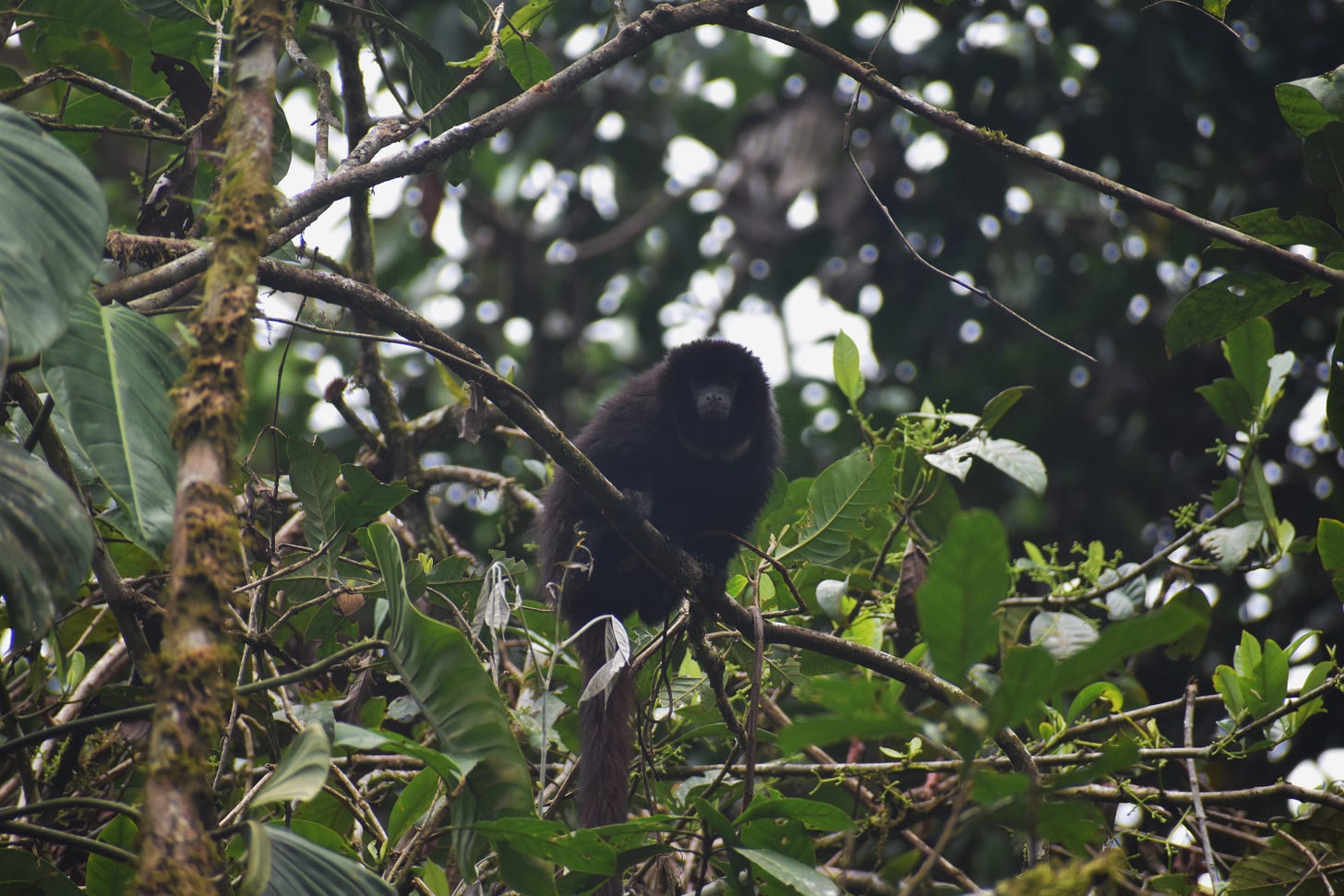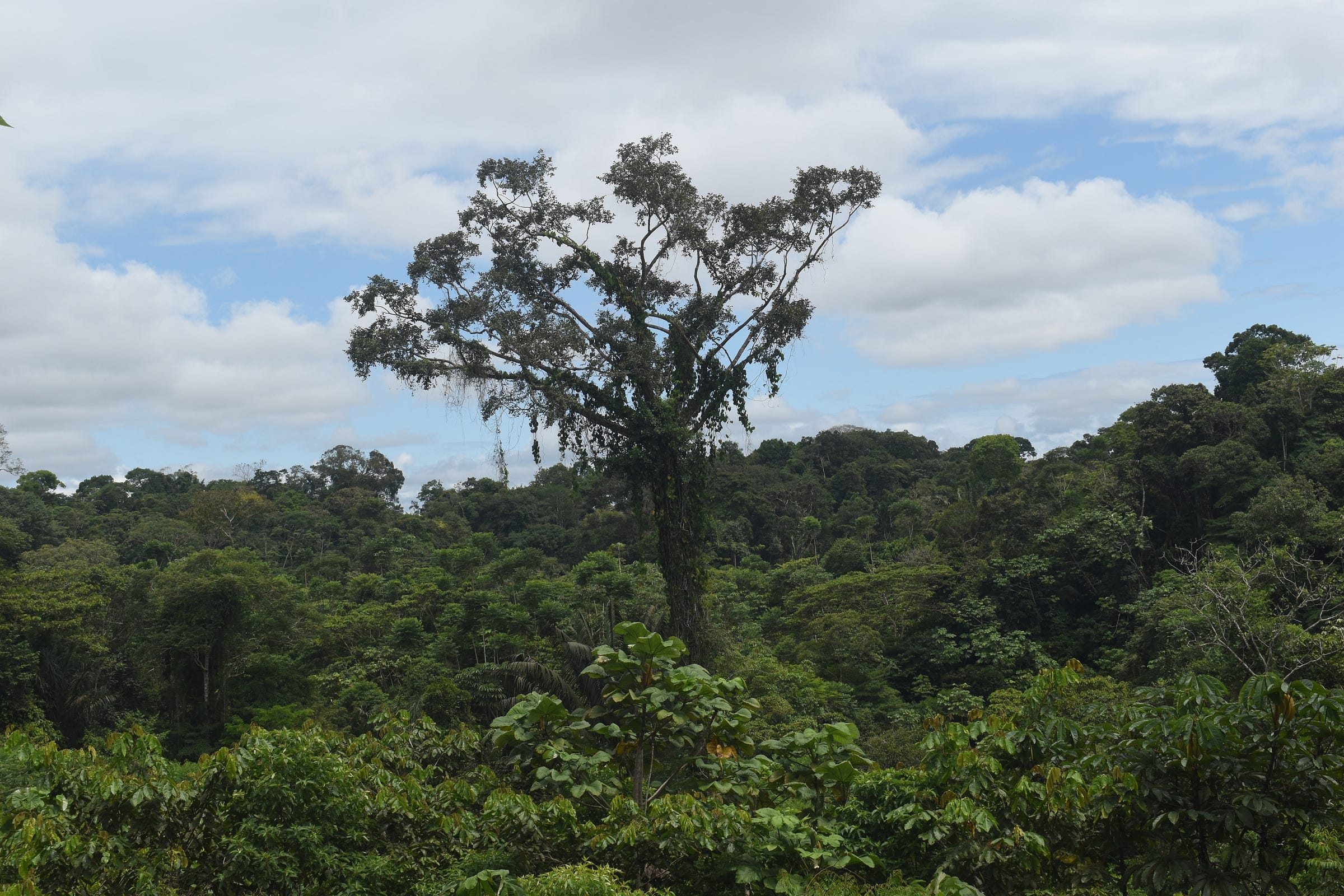Indigenous people in Colombia’s rainforests mount new resistance against an old foe: Canadian oil companies
Gran Tierra Energy has damaged their lands and spawned conflict before. The Nasa people are determined not to let it happen again.
“We come from the water,” says a Nasa indigenous of the San Rafael reservation in Putumayo, Colombia. “We were born from it. In our spirituality, it is the mother of all beings.”
He looks into the woods of the Amazonian rainforest region where he lives as he speaks with worry about oil exploration projects that are affecting his homelands. “Without the water, we would disappear.”
Canadian oil company Gran Tierra Energy has operated in the Amazonian rainforests in Putumayo, on the Colombian-Ecuadorian borderlands for decades through a series of holdings and titles. They have also undergone name changes and mergers with other oil companies: often in response to public scandals, court rulings or broken promises to the communities who live there.
The exploration blocs stretch into indigenous reserve areas, and the traditional and ancestral lands of several non-titled indigenous reservations.
Activists among affected communities in the region are calling for an end to Gran Tierra’s activities, which threaten not just delicate ecosystems in the Amazonian rainforest, but which have long exacerbated conflict in their homelands as well — dynamics which threaten both their lives and their very way of life.
Broken promises and economic damage: Petroleum extraction has a checkered history in Putumayo
The oil industry first arrived to the Amazonian rainforests of Putumayo in 1963, when U.S. company Texas Petroleum began exploration, native communities have opposed projects that damage their lands and culture.
Since then, multinational companies have come and gone, or changed names and investors, but affected indigenous communities say the underlying dynamics of extraction have remained constant.
“When I was 15 years old they were already breaking promises to build schools, roads, houses,” said one resident of the Jerusalén San Luis Alto Picudito indigenous reserve on hers 50, which is populated by Nasa people, and affected by current Gran Tierra exploration projects. “It’s a lie. They haven't done anything.” She asked not to be identified for security concerns.
Gran Tierra Energy discovered substantial new oil reserves in 2012 as part of their APE-La Cabaña project and applied for environmental licenses from Colombian authorities for extraction permits. Although the proposed project would have expanded oil extraction on the lands of at least seven Inga communities, Colombia’s Finance Ministry denied the presence of indigenous peoples in the area, making them ‘invisible’ before consultation regulations.
The Inga are suing the Ministry and the company for violating their right to informed consent. In 2015 the Inga people won a legal case in the department of Nariño that ordered the Ministry to visit the territory to verify the presence of the indigenous peoples rather than granting approval from the capital, Bogotá.
Six years later, in 2021 the Ministry recognized the presence of only 1 of the 7 of the communities. In 2022, partly due to community resistance and protests, Gran Tierra Energy decided to withdraw from the Ape-La Cabaña Project.
The Inga at the time hailed the decision as a victory. For years they fought to remove the Canadian oil giant from lands they have possessed for thousands of years, and organized sustained and large protests against the ecological and social damage caused by Gran Tierra — including two massive oil spills on indigenous lands.
However, Gran Tierra has discovered large deposits at other sites in Putumayo where exploration projects are still active, and where active wells are producing crude oil. The Canadian oil company promised significant investments in the region and an expansion of extraction activities.
Nearby indigenous communities worry that because of the expansion, their lands — in the heart of one of the most biodiverse regions on the planet— will suffer the same destruction as those that have been safeguarded by the Inga.
“The closest well is just upriver from here,” says a resident at the Nasa Ksxaw indigenous reserve. “It operates all day and all night. What happens if they damage the water here as they have in other places? How will we live?”
Nasa people have also been “invisible” to the Ministry of Finance: the Ministry denied their presence in the area of another Gran Tierra project (PUT10 2D). However, in 2016, Colombia's Constitutional Court ruled that the Nasa people's rights must be taken into account by the Canadian mining company.
After the ruling, Gran Tierra Energy suspended the project without remediation for the damage caused, just as it had done in the Inga territory. In Colombia, it has been common practice among companies, in violation of rights of indigenous peoples, to move forward with projects based solely on the extraction permissions granted from the Finance Ministry.
For this reason, communities affected by oil projects have had to resort to the judiciary to request protection of their right to free, prior, and informed consent on energy projects that affect their lands.
Often, however, often those rulings have come too late, after multiple damages have already been caused.
On June 18, applications filed by the Nasa people to declare the community of Jerusalén San Luis an indigenous reserve were denied. Investigators argued that no visit to the field is necessary, that the Ministry can deny the legal presence of indigenous people and oversee the environmental and social impacts of the ongoing project PUT 21 WEST 3D of Gran Tierra Energy.
The decision was made from a desk in Bogotá.
Extraction projects are a magnet for non-state armed groups, say experts and residents
In addition to environmental damages, Gran Tierra operations also damaged the very social fabric of local communities, and, according to Colombia’s ombudsman’s office, their operations may have indirectly acted as a magnet for criminal activity by armed groups, like Comandos Frontera.
“A few months ago, two armed groups and the army were just over there,” said one resident whose name is being withheld for security reasons, as he pointed at a tree perhaps 100 meters away. He says fighters from criminal armed group, Comandos de la Frontera, were using it as cover as they fired on fighters from the Carolina Ramírez Front, another armed group in the region, who were taking refuge below an elevated wooden house that contained a Nasa family.
“There was a pregnant woman inside, with her child. She could only pray that the bullets wouldn’t hit her through the [thin wooden] walls,” he continued.
The resident further claimed that the Colombian military arrived during the firefight and “supported” the Comandos Frontera against the other criminal group, who then fled.
The Interecclesiastical Justice and Peace Commission, a local NGO that has been supporting the Nasa People for decades, has repeatedly denounced both criminal armed groups and the responses by state security forces to ongoing conflict in the region. On April 3, the commission requested an investigation into “the actions of public functionaries and the impact ongoing conflict has on the human rights of the Nasa reserve at Jerusalén San Luis Alto Picudito.”
According to a 2024 report by Ambiente y Sociedad, an NGO that advocates for environmental regulations in Colombia, the presence of armed groups in Putumayo is intrinsically linked to the oil industry. When the Revolutionary Armed Forces of Colombia (FARC), a guerrilla group that fought against the state during Colombia’s civil war, controlled the region, the group extorted oil companies or damaged transport infrastructure. This led to massive oil spills.
FARC fighters also stole oil, both from pipelines and by hijacking truck shipments, to fund their actions. The FARC disarmed and demobilized as part of the historic 2016 peace accord, but some dissident groups refused to recognize the deal and continued activities in the region. Others rearmed following the failure to implement the peace agreement.
Criminal armed group Comandos de la Frontera is now effectively the dominant force in Putumayo. The Comandos originally evolved from an alliance between two of those FARC splinter groups and paramilitary forces that fought on the side of the state during the civil war. They use the region for coca production, extortion, smuggling across the Ecuadorian and Peruvian borders, and illegal mining.
They also act as private security for pipelines and oil and gas exploration fields, demanding protection money in return for the service, according to the same Ambiente y Sociedad report.
As a result, the Comandos de la Frontera have motives to use threats, or even violence, against activists who oppose extraction projects.
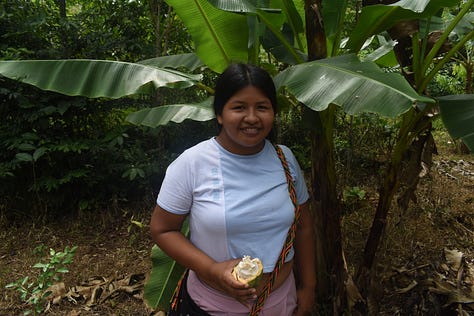
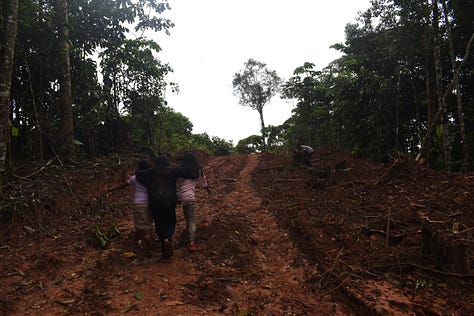

Activists risk their lives in ‘the most dangerous country in the world for land-defenders’
“Many of our leaders have disappeared over the years,” says a Nasa leader whose name is being withheld for security reasons. In 2024, Colombia was the most dangerous country in the world for environmentalists and land defenders, according to human rights watchdog group Global Witness.
More than 450 have been killed since 2012, a number that accounts for nearly 40% of the total number of land defenders killed globally.
Another member of the Nasa community at the San Luis Alto Picudito indigenous reserve says that violence and threats aren’t the only concern. “We also have people who simply disappear after opposing the armed groups or organizing against oil companies.”
In 2022, Colombia signed the international Escazu Agreement, a legally binding treaty that is supposed to push signatory countries into more transparent decision-making about issues that affect the environment. The accord is also intended to protect social leaders and activists and guarantee that communities have more autonomy and input in extraction projects that will impact their lands.
But singing of Escazu, celebrated by indigenous communities across Colombia, has in many been a symbolic rather than concrete victory for land defenders.
“The agreement has been ratified” by Colombia’s Congress, executive and judiciary, said María Arango Zambrano, Forest Peoples Programme lawyer for Colombia, “but it hasn’t been implemented yet.”
Colombia’s Ministry of the Environment, in a statement shortly after the country’s Constitutional Court ratified the agreement in 2024, wrote that they are working with affected communities to create “strategic routes,” including “workshops, socialization tables and the creation of a protocol to react to risk and aggression against environmental defenders.”
Gran Tierra suspended operations in four of its licensed plots in Putumayo in late 2023 for “social or security concerns”, according to information provided by the company to potential investors. However, their holdings at active extraction sites in Putumayo represent 22% of their current production, and reserves in the Department represent 93% of total holdings in the country, according to internal company documents.
In addition to a lack of full implementation of the Escazu Agreement, organized resistance from indigenous leaders can be undermined by schisms within affected communities.
The Nasa who live in San Rafael say that Gran Tierra has managed to convince some members of the community to support the project with promises of development interventions, like schools and roads. And some opponents of oil exploration have been threatened into silence by armed groups.
“We have been threatened as a community. Our leaders have been threatened,” says a resident of the reserve. “Here, it is a crime to protect the territory and our environment,” she continued.
Members from the Nasa and Inga communities have tried to bring the fight to Canadian courts as well, where Gran Tierra is headquartered. In 2023, those processes were dismissed, with courts ruling they have no jurisdiction outside of Canada.
In early 2025, Nasa activists applied for tourist visas to the country, hoping to raise awareness of their cause among the Canadian public. They also hoped to meet and build relationships with indigenous peoples in Canada, who have undergone similar struggles in North America.
Visas for nearly the entire delegation were denied.
“If I could speak to the people of Canada, I would try to explain to them that this isn’t just a physical threat to our community,” said another young resident of the San Rafael reserve.
“A tree for us is sacred. It is our culture. We believe there are spirits in all things. This land isn’t just sustenance for our bodies, it is our roots. To us, it is priceless,” she continued.
Multiple studies have shown that indigenous communities are the best rainforest guardians when they have the autonomy to make their own decisions about land development and extraction projects.
In April, a study released by researchers from the University of Helsinki in collaboration with Colombian researchers, provided further evidence that stewardship by Indigenous communities has effectively avoided forest loss in dense southwestern Amazonian areas.
“Indigenous peoples’ forest stewardship practices are underpinned by land-based governance and economies with long-term perspectives and being inclusive to more than human beings,” say the authors in the academic paper. “Which make them strikingly different from neighboring areas in which levels of deforestation are comparably higher.”
For the Nasa people, who think of themself as water guardians in the region, the idea is much simpler. “The earth is my mother. She feeds me. She feeds my children. To kill her for greed would be unthinkable.”
Activists in Putumayo have called for legislation to protect their communities from future extraction projects and investments. As part of those concerns, they have agreed to meetings with representatives from the Colombian government. They have also called for a “Minga”, a collective form of protest common in Colombia, organized by multiple indigenous communities in alliance, to demand increased autonomy over their own lands.
“Our vision is to preserve this land not only for our own children, but also for their children,” said one Nasa leader. And indeed “for everyone in the world.”
You can also donate a one-time gift via “Buy Me a Coffee”. It only takes a few moments, and you can do so here.
And if you can’t do any of that, please do help us by sharing the piece! We don’t have billionaire PR teams either. haha
Hasta pronto, piratas!


